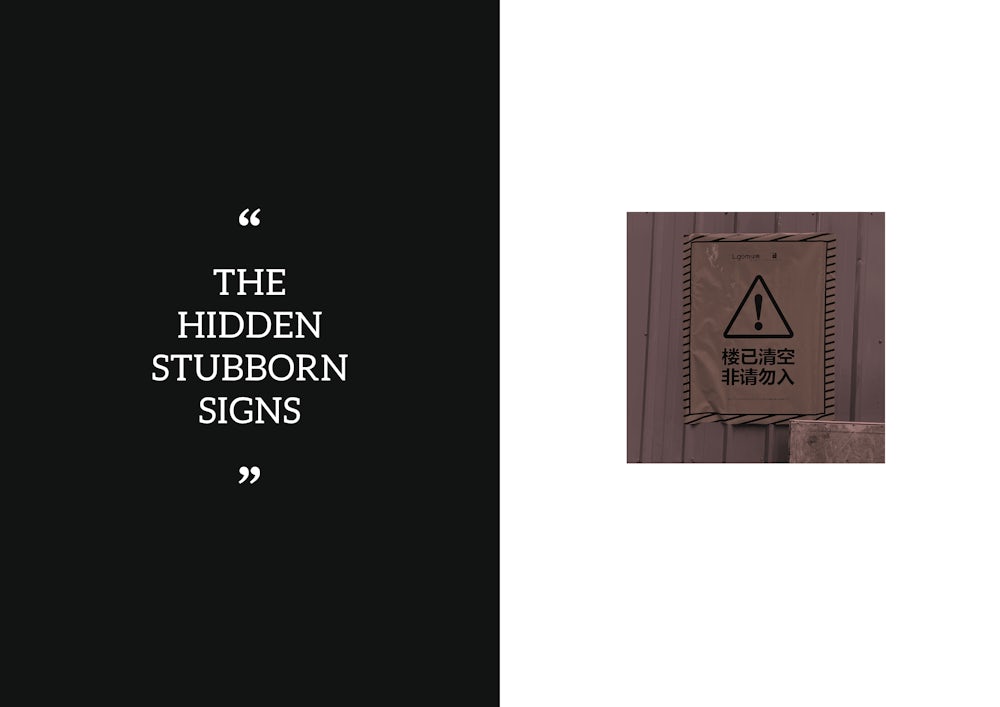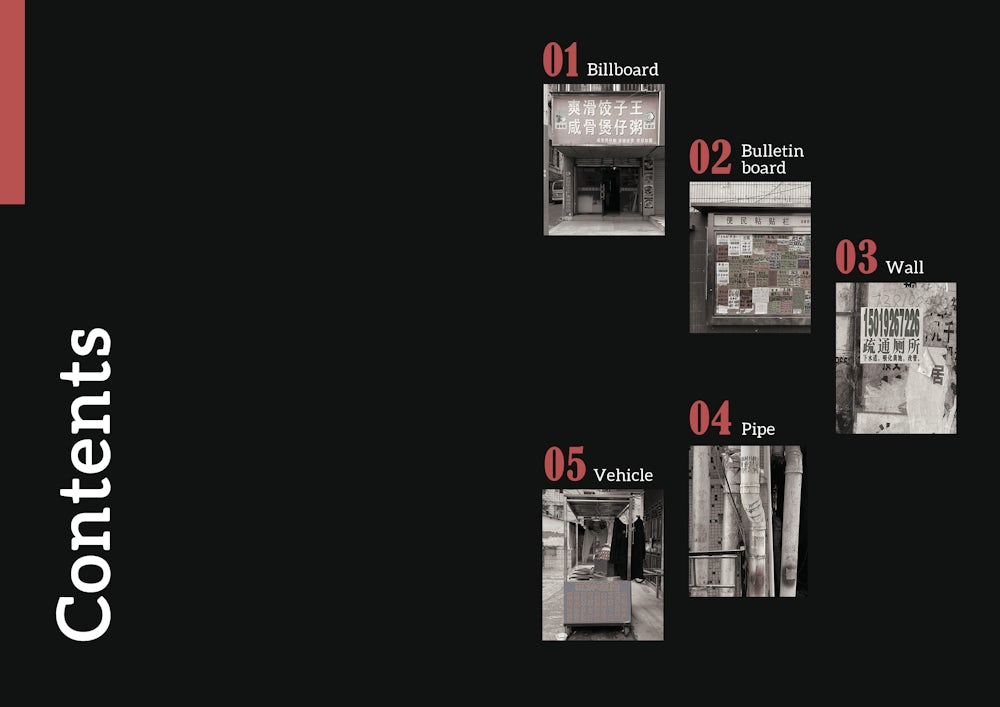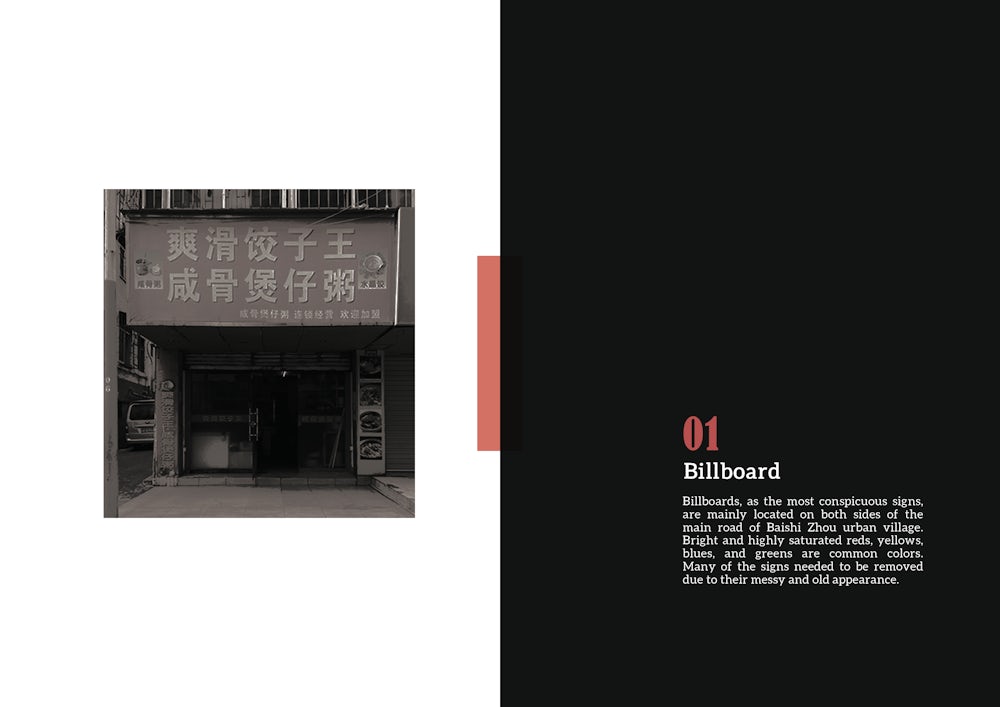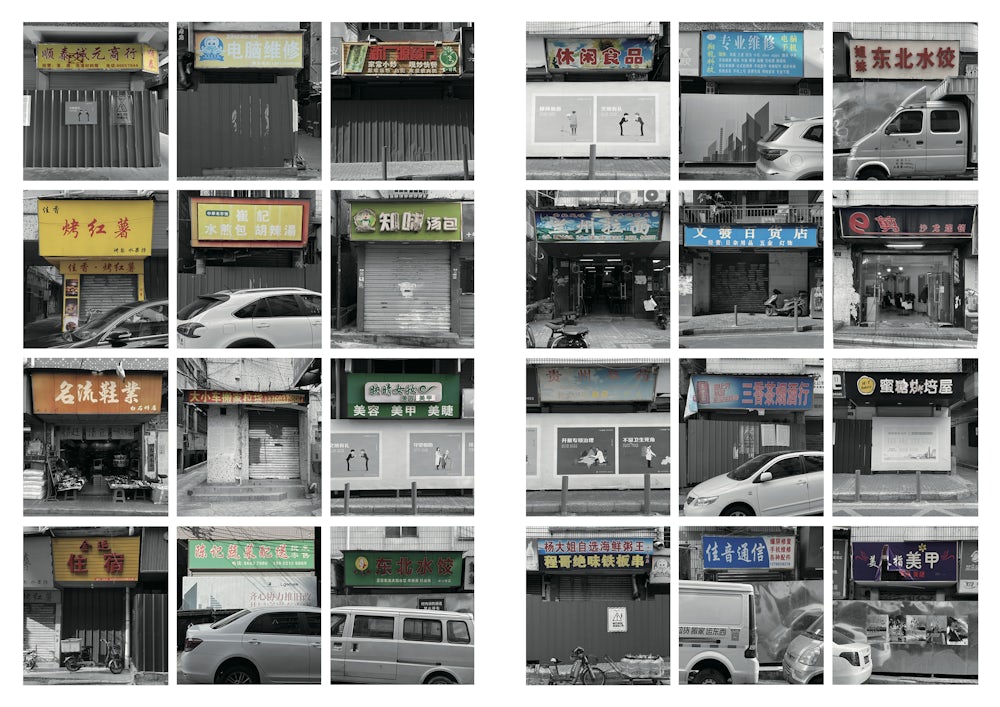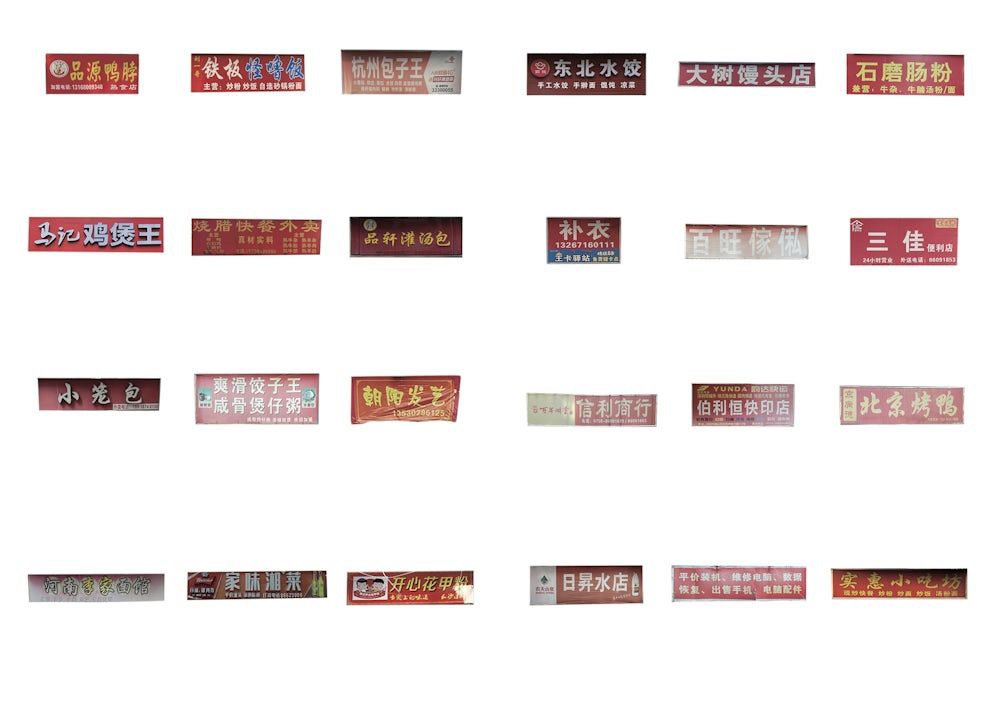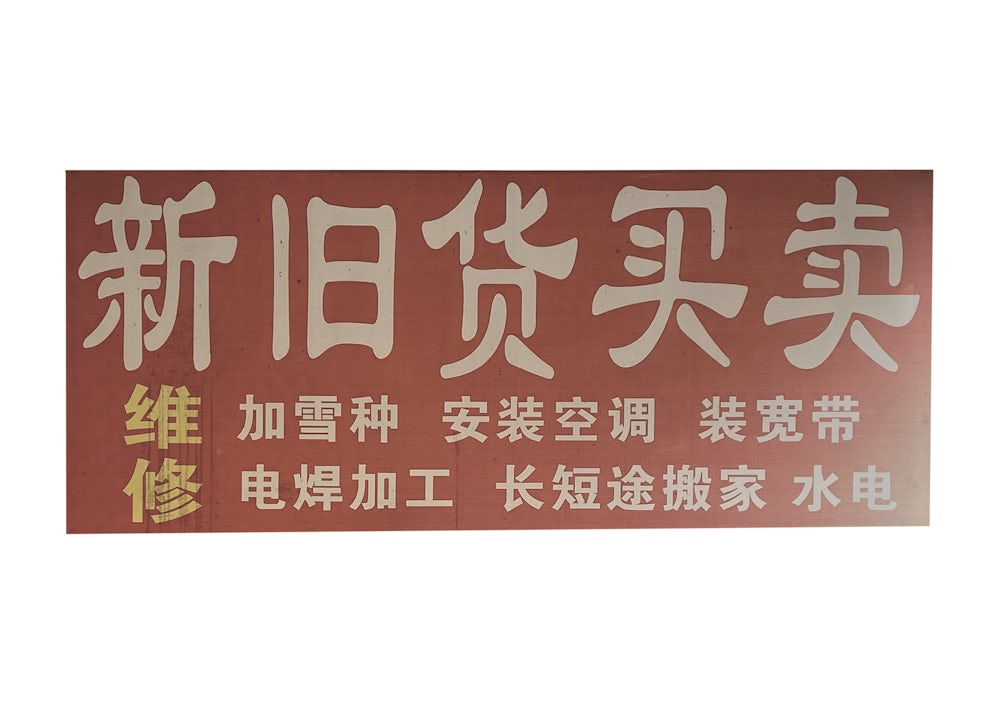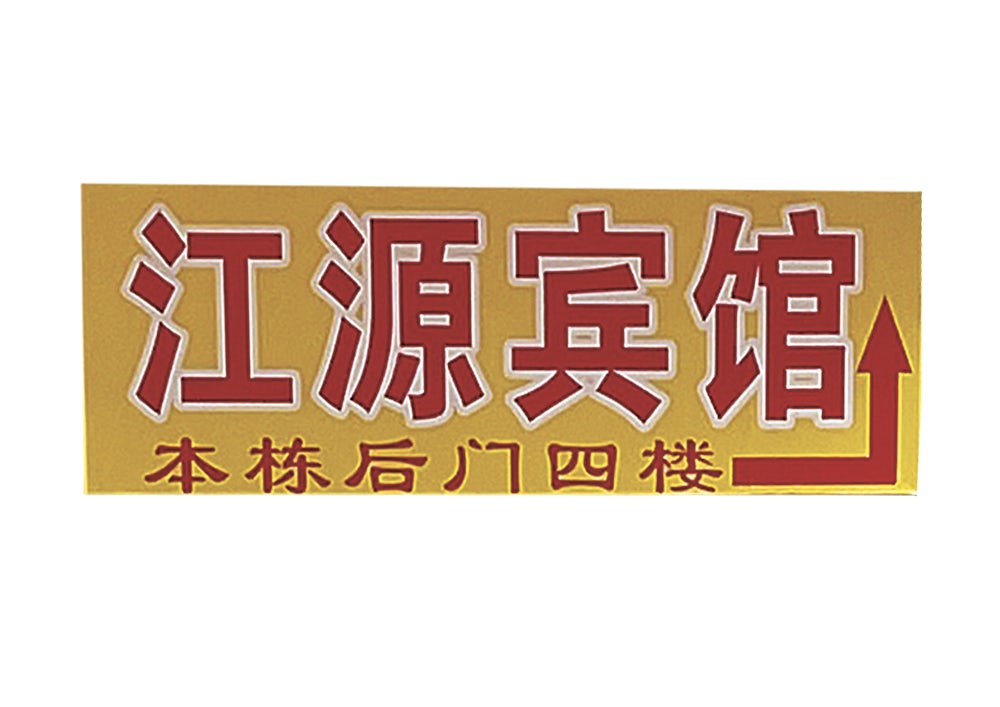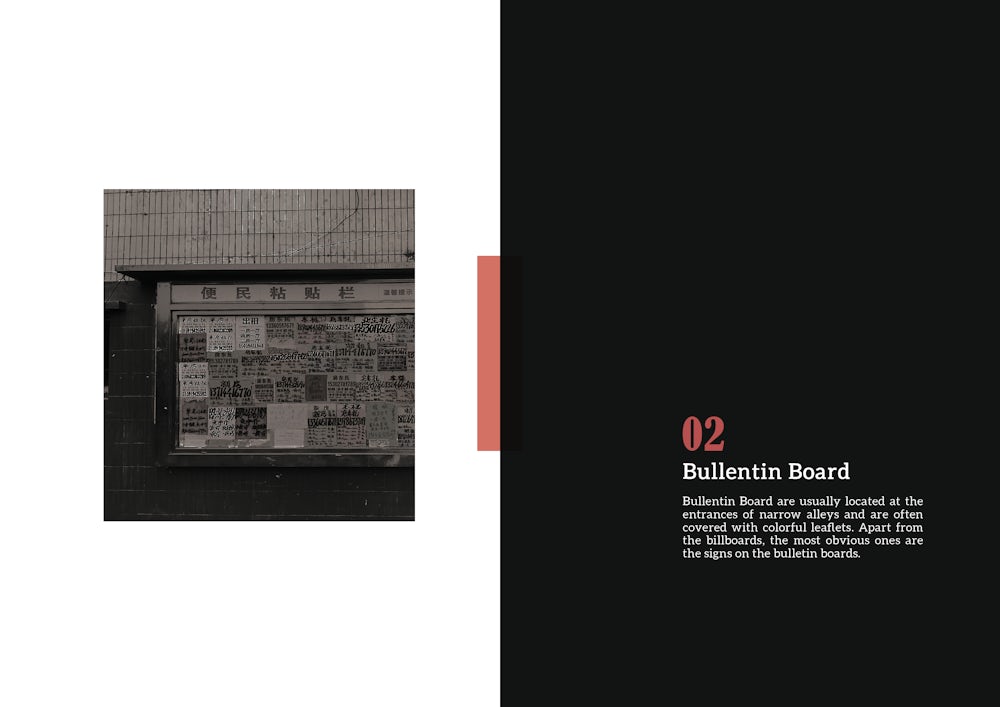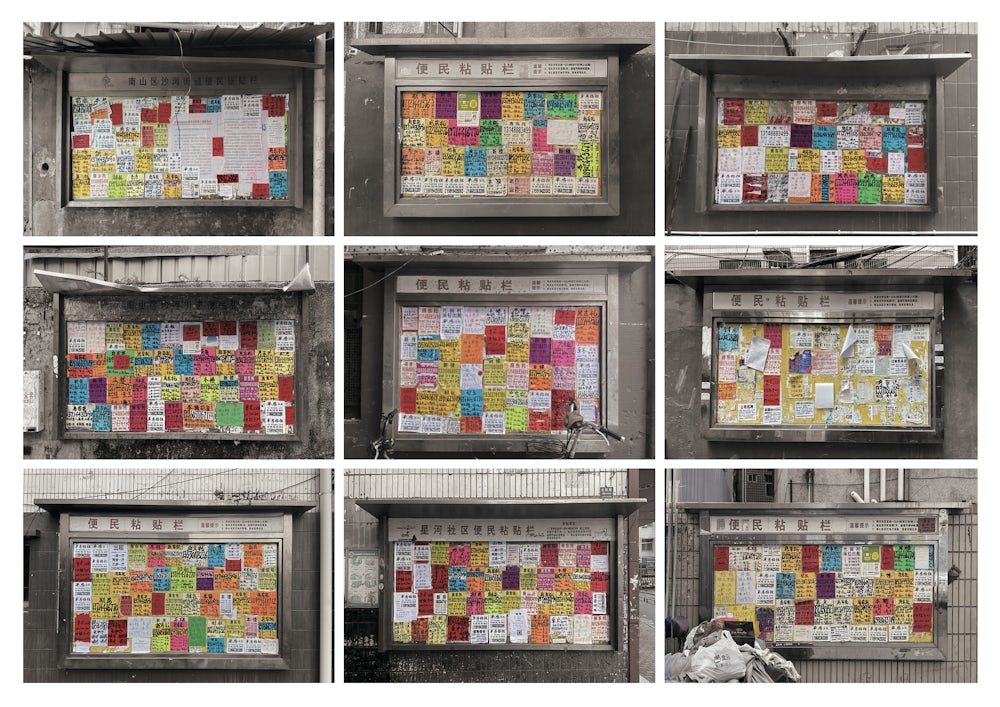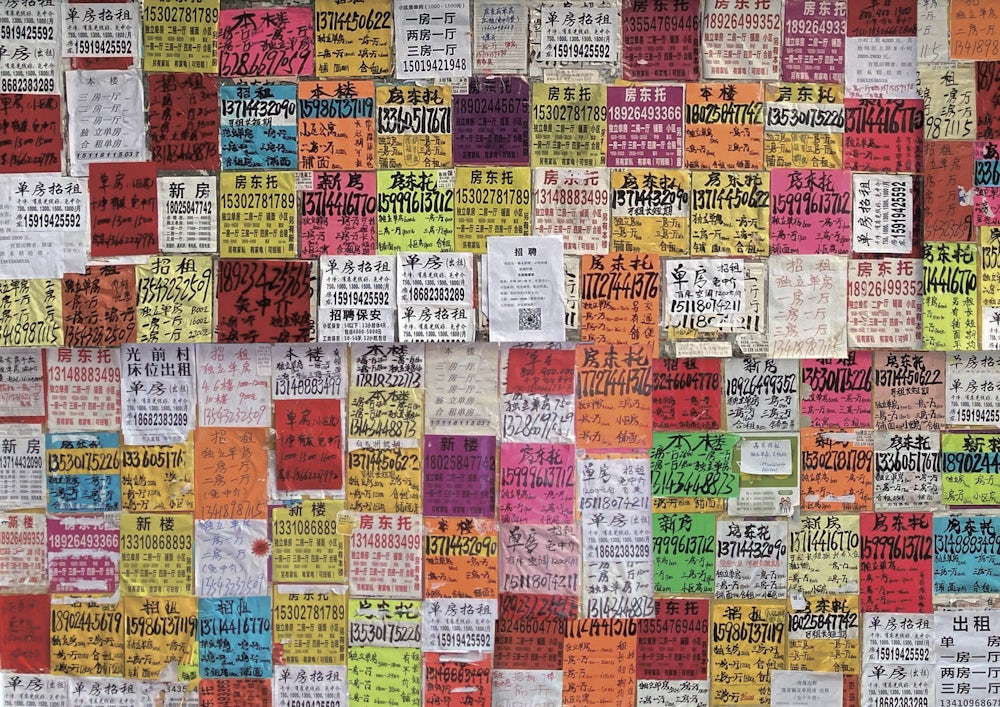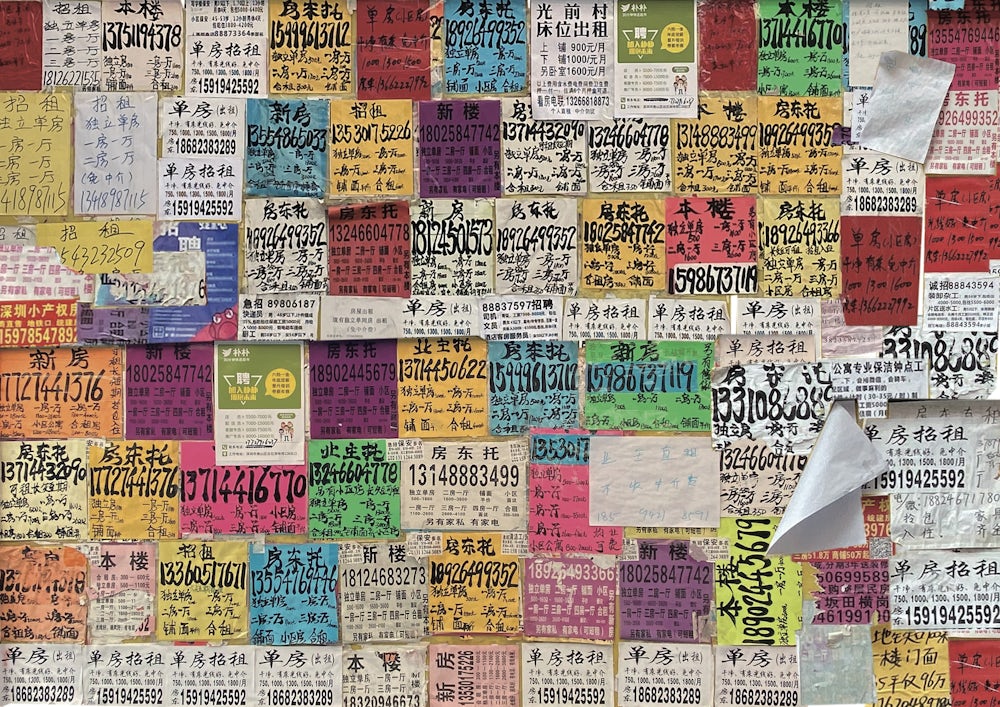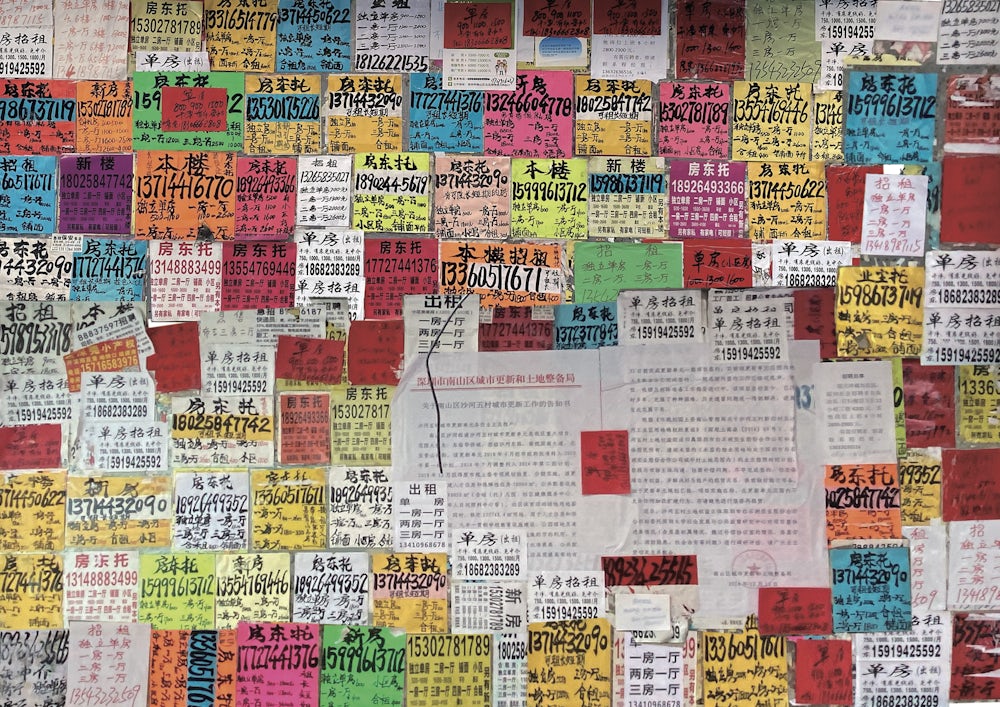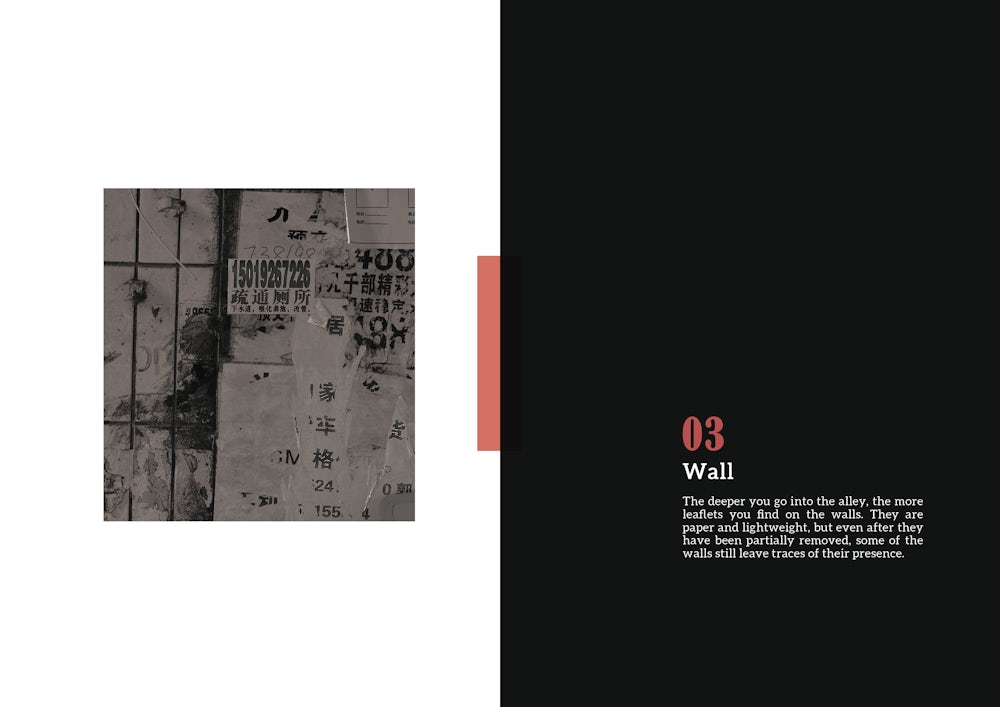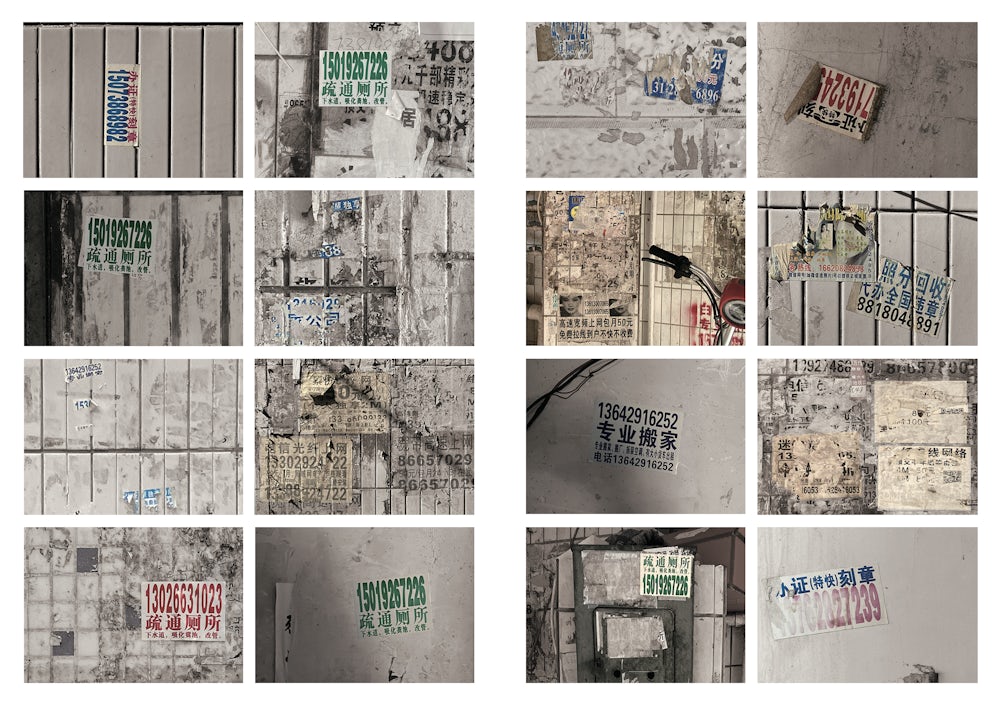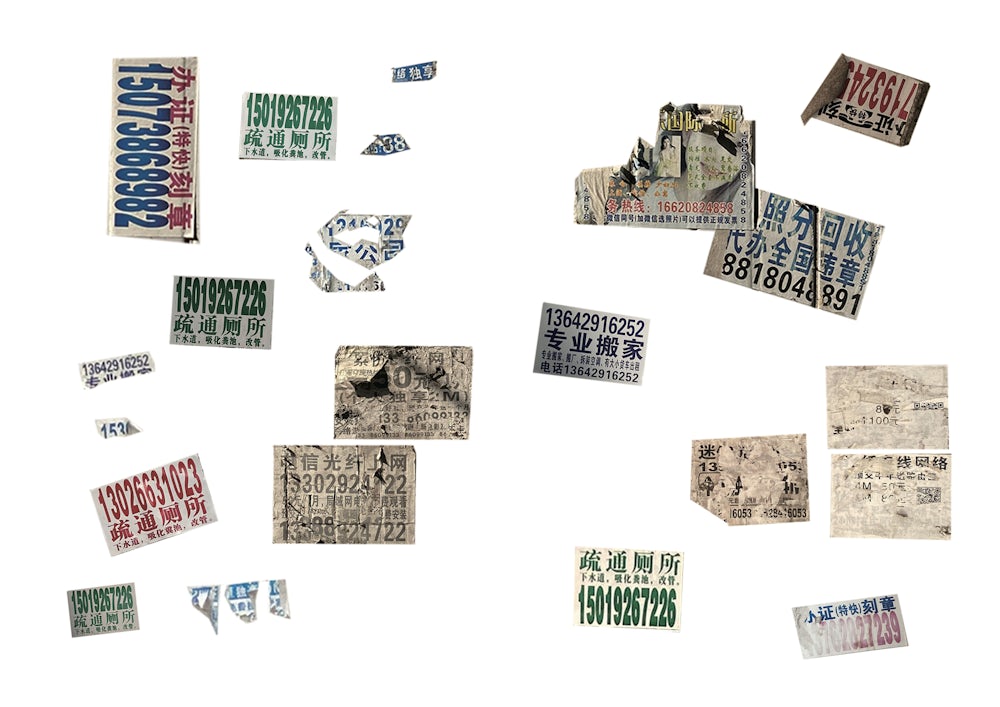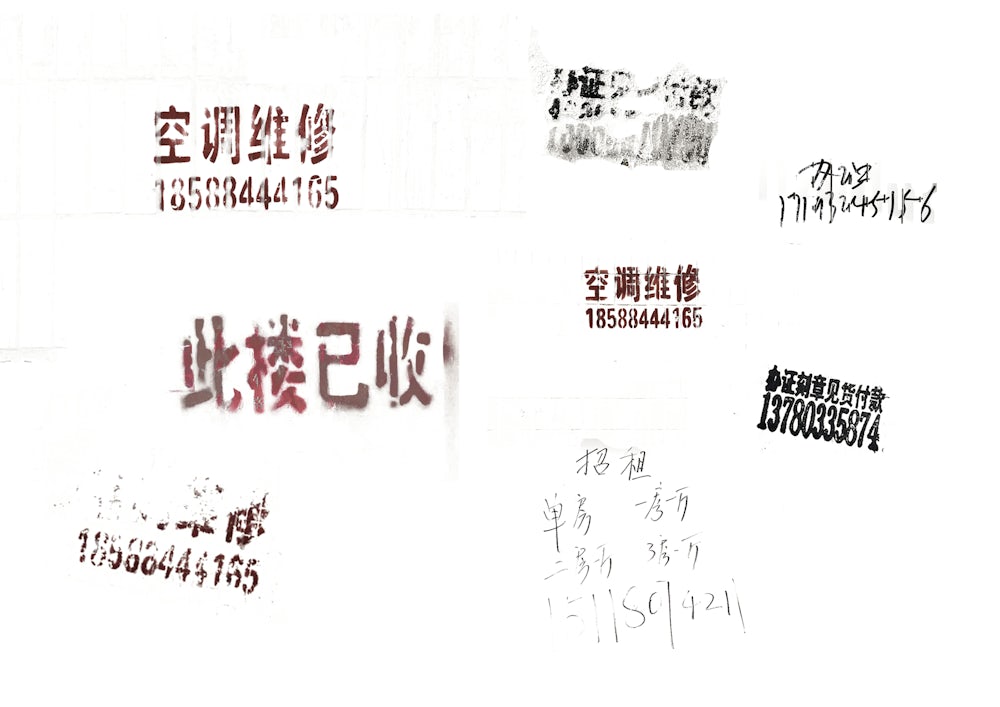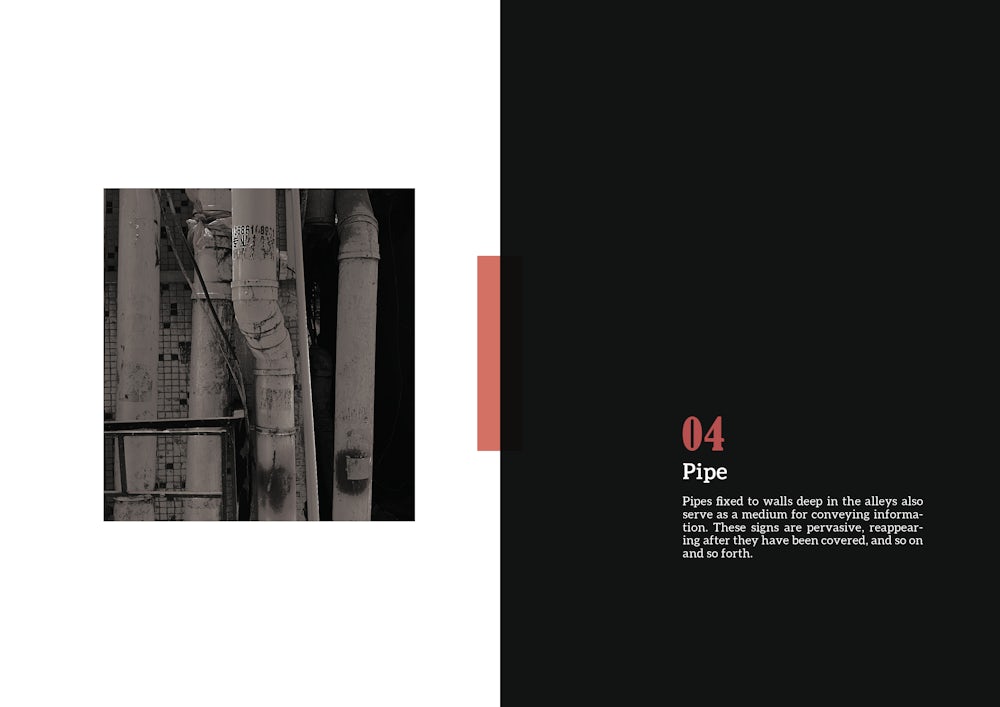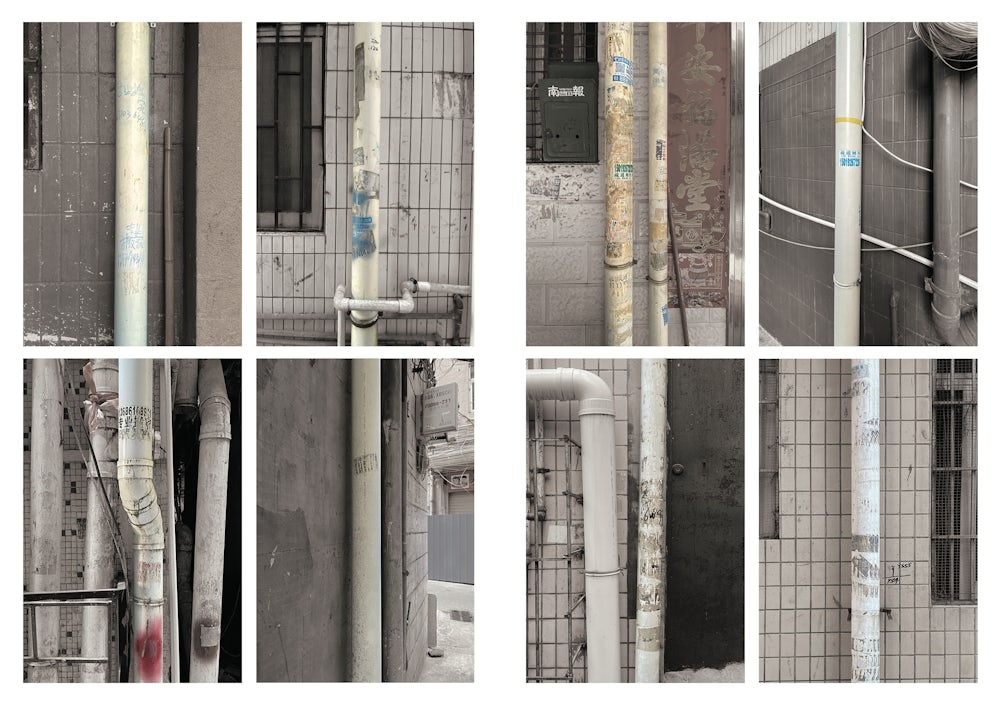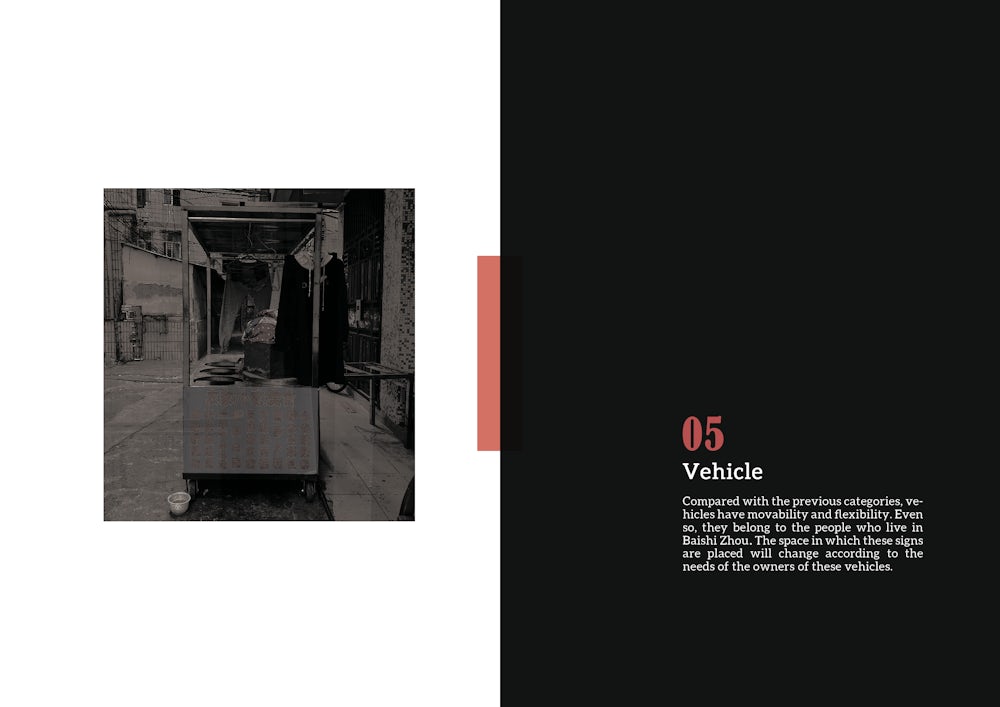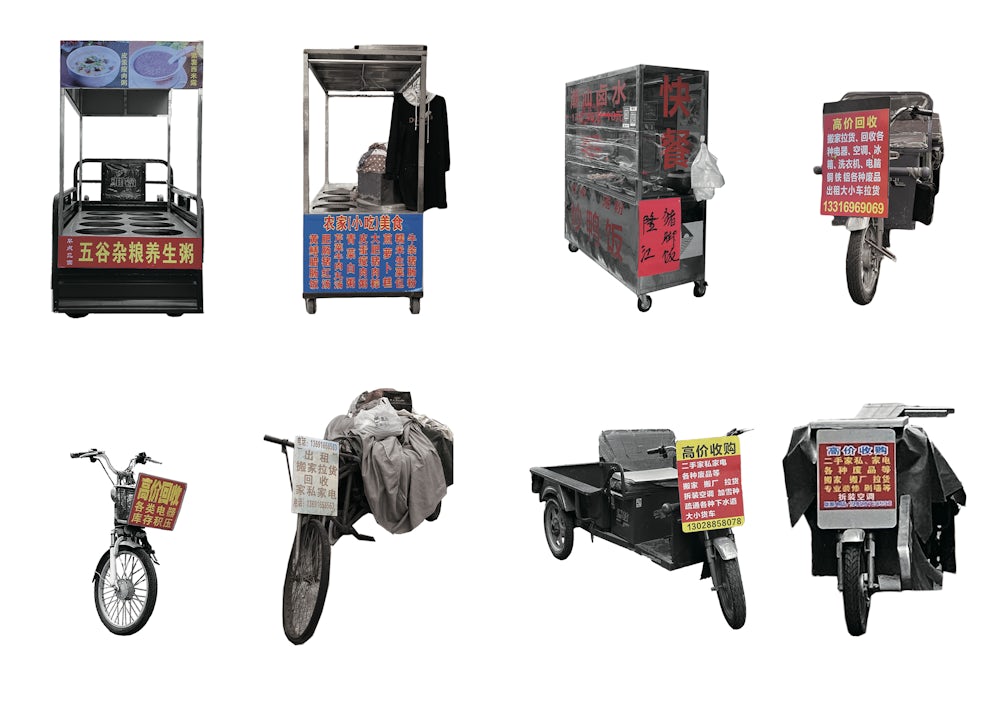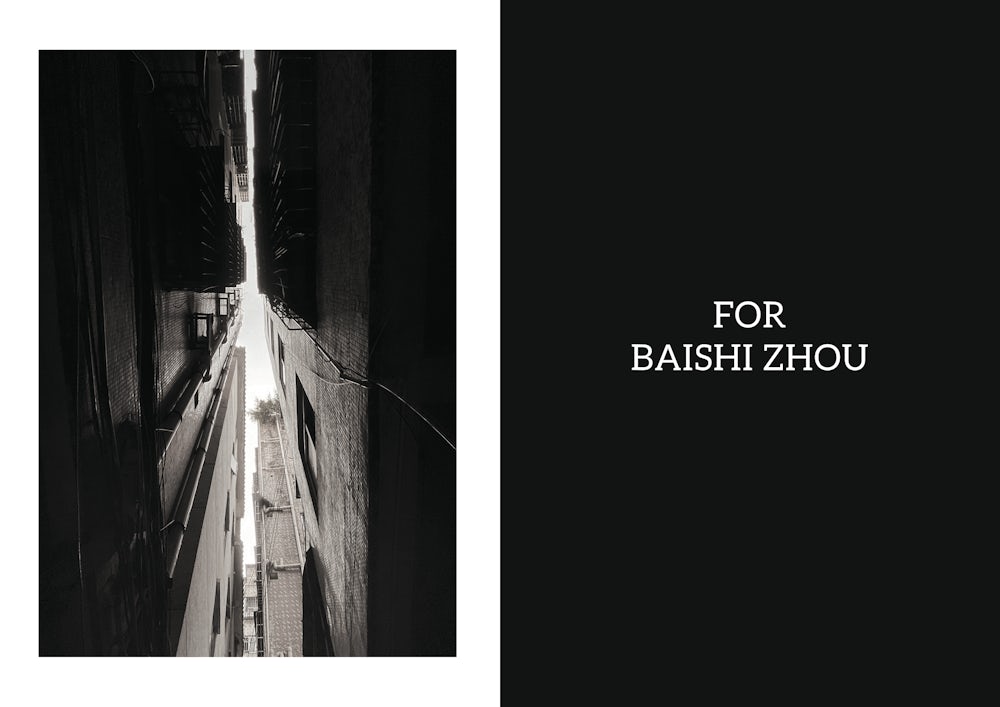Liangyue Tan
"The Memory of Baishi Zhou"
Keywords: memory, extraction, photography, archival practice, publishing
In Shenzhen, an urban village is characterised by low rent and high density. It provides a place for low income communities to settle in the unaffordable center of the city. Its most prominent identity is the bright and ubiquitous advertisements and billboards. In the case of the gradual urban transformation, local differences can be witnessed through them where these signs embody the dialogue between people and their environment.
The project considers Baishi Zhou, one of the largest urban villages in Shenzhen, that is threatened by demolition and the replacement of the original dense neighberhoods with commercial districts and high-end residential buildings. As a result, its bright and colourful signs and billboards are also threatened since they don't fit within the government's vision of the city. However, the signs in Baishi Zhou have become part of the collective memory of the local community. Therefore, the project takes the form of a book that compiles the documentation of the different signs of the urban village to preserve the memory of Baishi Zhou. Through photographing the mundane and the everyday, signs become a record of the time and space in which they are located. The book is structured based on the classification of the signs according to their five main media and location: billboard, bulletin board, wall, pipe and vehicle. When these monotonous signs are presented in isolation, they lose their sense of size and gain a new meaning. The fragmentation and highlighting evoke memories hidden in the city that are about to disappear and reveal their social and cultural relationship with the local community.

